Address
304 North Cardinal
St. Dorchester Center, MA 02124
Work Hours
Monday to Friday: 7AM - 7PM
Weekend: 10AM - 5PM
Address
304 North Cardinal
St. Dorchester Center, MA 02124
Work Hours
Monday to Friday: 7AM - 7PM
Weekend: 10AM - 5PM

In a world where health and wellness are at the forefront of consumer consciousness, the juicer has evolved from a mere kitchen gadget to a symbol of modern lifestyle. As the demand for fresh, nutritious beverages surges, the art of juicer design has become a critical factor in capturing the market’s attention. Today, we delve into the intricacies of the ODM juicer design service, exploring how it’s shaping the future of this dynamic industry.
The Evolution of Juicing Technology
In the realm of culinary appliances, the juicer has undergone a remarkable transformation over the years. Once a simple tool for extracting liquid from fruits and vegetables, it has now become a symbol of health and wellness, a staple in modern kitchens. The evolution of juicing technology is a testament to human ingenuity and the ever-growing demand for healthier lifestyles.
Early juicers were rudimentary, often manual and labor-intensive. They consisted of a simple squeezing mechanism that required the user to physically press or twist the fruits and vegetables to extract the juice. These devices were not only time-consuming but also limited in terms of juice quality and efficiency. The process was often messy, and the resulting juice was prone to oxidation, leading to a shorter shelf life.
As the health movement gained momentum in the mid-20th century, so did the demand for better juicing solutions. Enter the electric juicer, a game-changer that automated the process and made it more accessible to the average consumer. The electric juicer used a spinning blade or a press mechanism to extract juice, which was a significant improvement over the manual methods of the past.
The 1970s and 1980s saw the introduction of centrifugal juicers, which became the most popular type of juicer on the market. These machines used a high-speed blade to chop up the produce and a strainer to separate the juice from the pulp. They were efficient and easy to clean, but they also produced a lot of foam and heat, which could degrade the nutritional value of the juice.
Simultaneously, masticating juicers, also known as cold press juicers, began to emerge. These juicers operate at a slower speed and use a single gear to crush and press the produce, resulting in a more nutritious and less foamy juice. The cold-press method preserves the enzymes and vitamins, making it a favorite among health enthusiasts.
The 21st century has brought about a new era of juicing technology, characterized by innovation and customization. High-speed juicers, often referred to as twin-gear juicers, have entered the market. These machines offer the benefits of both centrifugal and masticating juicers, combining the efficiency of the former with the nutritional integrity of the latter.
The rise of the juice bar culture has also influenced the evolution of juicers. Bar owners and health-conscious consumers alike demand juicers that can handle a variety of ingredients, from leafy greens to nuts and seeds, to create a wide array of health-boosting concoctions. This has led to the development of juicers with larger feed tubes, wider blades, and more versatile designs.
In addition to the mechanical advancements, juicers have become more user-friendly and aesthetically pleasing. Modern juicers come in a variety of colors and styles, fitting seamlessly into kitchen decor. They often feature intuitive interfaces, digital displays, and programmable settings that make juicing a breeze.
The integration of smart technology has also taken juicing to new heights. Some juicers now come with Bluetooth connectivity, allowing users to monitor their juicing habits and receive nutritional information. Others are equipped with self-cleaning functions and automatic shut-off features for added convenience and safety.
Moreover, the environmental impact of juicing has not gone unnoticed. Manufacturers are increasingly focusing on creating juicers that are more sustainable, using eco-friendly materials and reducing waste. This shift towards sustainability is not only beneficial for the planet but also resonates with consumers who are conscious of their ecological footprint.
In conclusion, the evolution of juicing technology has been a journey marked by continuous improvement and innovation. From the simple squeezing of fruits and vegetables to the sophisticated machines of today, juicers have become an essential tool for those seeking to incorporate fresh, healthy beverages into their daily routines. As the health and wellness industry continues to grow, so too will the evolution of juicing technology, promising even more exciting developments in the years to come.

The juicing industry has seen a remarkable transformation over the years, and at the heart of this evolution lies the concept of Original Design Manufacturing (ODM). ODM has become the key to unlocking customized juicer solutions, offering brands and manufacturers a unique competitive edge. Let’s delve into what ODM entails and how it’s reshaping the landscape of juicer design and production.
ODM, in its simplest form, is a collaboration between a manufacturer and a brand. The manufacturer, equipped with expertise in design, engineering, and production, works closely with the brand to create a product that aligns perfectly with the brand’s vision and market demands. This collaborative approach allows for a level of customization that is often unattainable through traditional manufacturing processes.
One of the primary benefits of ODM is the ability to tailor juicers to specific market segments. For instance, a brand targeting health-conscious consumers might seek a juicer that emphasizes efficiency, durability, and ease of use. Through ODM, the manufacturer can design a product that not only meets these criteria but also stands out in terms of aesthetics and functionality.
Customization extends beyond just the product itself. ODM can also encompass branding elements, such as unique logos, color schemes, and packaging designs. This holistic approach ensures that the juicer not only functions effectively but also resonates with the target audience on a deeper level.
The design process in ODM is iterative and collaborative. It begins with research and understanding the brand’s goals, target market, and competitive landscape. This phase is crucial for identifying the unique selling points (USPs) that will differentiate the juicer from others on the market. From there, the manufacturer brings in their design team to brainstorm and sketch potential concepts.
These initial designs are then refined through a series of prototyping and testing phases. The manufacturer might create several prototypes, each with subtle variations, to test for functionality, durability, and user experience. This iterative process allows for continuous improvement and ensures that the final product is not only visually appealing but also robust and user-friendly.
One of the key advantages of ODM is the speed at which products can be brought to market. Unlike traditional manufacturing, where the design and production processes are often siloed, ODM streamlines the entire process. This means that brands can get their customized juicers to market faster, capitalizing on emerging trends and consumer demands.
Another critical aspect of ODM is the access to cutting-edge technology and materials. Manufacturers specializing in ODM often invest heavily in research and development to stay ahead of the curve. This means that brands can leverage the latest innovations in juicer design, such as advanced juicing mechanisms, energy-efficient motors, and innovative materials that reduce weight and increase durability.
Quality control is also a cornerstone of ODM. Manufacturers that offer ODM services are typically committed to producing high-quality products. They have the infrastructure and expertise to ensure that every juicer meets stringent quality standards, from the initial design stages to the final product.
Moreover, ODM allows for scalability. As a brand grows, its juicer needs might evolve. Whether it’s scaling up production to meet increased demand or diversifying the product line to cater to new market segments, an ODM partner can adapt and scale the production process accordingly.
In the realm of juicer design, ODM is not just a service; it’s a strategic partnership. It’s about creating a product that not only fulfills a need but also exceeds expectations. By working hand-in-hand with a manufacturer, brands can push the boundaries of juicer design, delivering products that are not just functional but also a testament to innovation and quality.
In conclusion, ODM is the key to unlocking customized juicer solutions. It’s a process that combines creativity, technology, and expertise to produce products that resonate with consumers and stand out in a crowded market. As the juicing industry continues to evolve, the role of ODM in shaping the future of juicer design is undeniable.
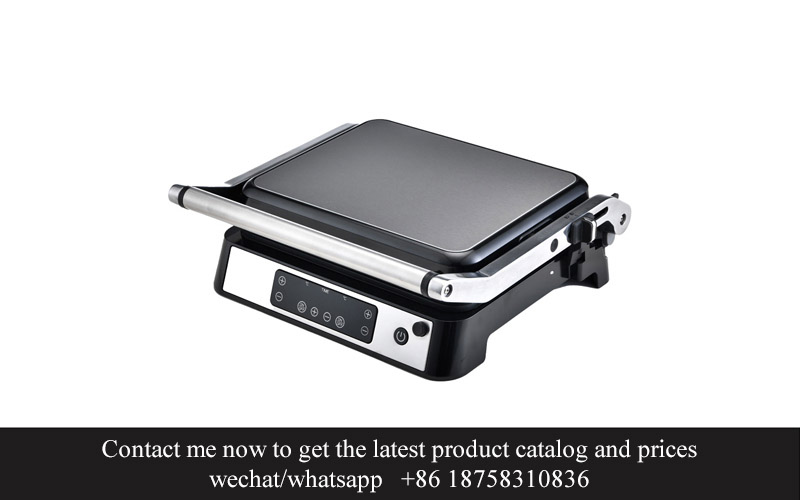
The Art of Juicer Design: A Fresh Perspective
In a world where technology and aesthetics intersect, the design of kitchen appliances has evolved from mere functionality to an art form. Juicers, once considered just a utilitarian tool, have now become a statement of style and innovation. The art of juicer design has emerged as a fresh perspective, redefining how we interact with our kitchen gadgets.
Designing a juicer isn’t just about squeezing out the juice; it’s about crafting an experience. The sleek curves and intuitive interfaces are not just attractive; they are carefully thought out to enhance user satisfaction. One key aspect of this fresh perspective is the integration of ergonomics.
Ergonomics plays a crucial role in the design process, ensuring that the juicer fits seamlessly into the user’s lifestyle. Consider the handle design: it should be comfortable to grip, with a non-slip texture that allows for a firm and steady hold. The placement of buttons and switches is also crucial; they should be easy to access without causing strain or frustration.
Another aspect that breathes new life into juicer design is the use of sustainable materials. Eco-conscious consumers are increasingly looking for appliances that align with their environmental values. By using recycled plastics, bamboo, or stainless steel, designers can create juicers that are not only stylish but also environmentally friendly.
Color and texture also contribute significantly to the overall design aesthetic. While bright, bold colors can be eye-catching, the choice of color should complement the kitchen’s decor. Textures, from the smooth surface of the body to the rough texture of the grip, should feel inviting and tactile. The contrast between materials can create visual interest and a sense of quality.
The aesthetics of a juicer are not limited to its appearance; they extend to the functionality of the design. For example, the design of the juicing bowl can impact the juicer’s efficiency. A wide mouth allows for larger pieces of fruit and vegetables, reducing the need for chopping and speeding up the juicing process. The design of the filter and blade assembly can also affect the quality of the juice and the cleanliness of the appliance.
Innovation in juicer design isn’t just about form; it’s about function. Smart features such as digital displays, touch controls, and programmable settings offer users a personalized experience. These features not only make the juicer more user-friendly but also provide valuable information, such as juice yield and health benefits.
The design of the juicer also reflects the brand’s identity. Each brand has its unique style and values, which are communicated through the product design. A minimalist design can convey simplicity and elegance, while a bold, futuristic look might suggest cutting-edge technology and innovation.
Moreover, the art of juicer design involves considering the lifecycle of the product. Designers must think about how the juicer will be used, stored, and disposed of. The design should facilitate easy cleaning, maintenance, and recycling or proper disposal at the end of its life.
In the realm of juicer design, the concept of modularity has gained traction. Designers are creating juicers that can be customized or upgraded. For instance, a base unit can be paired with different attachments or juicing baskets to cater to various juicing preferences and needs.
Finally, the design process is iterative. It involves prototyping and testing, refining ideas through multiple iterations until the design is perfected. User feedback is invaluable in this process, as it helps designers understand how their creations are perceived and used in real-world scenarios.
The art of juicer design, therefore, is a blend of aesthetic considerations, functional innovation, sustainability, and user-centricity. It’s a fresh perspective that not only enhances the juicing experience but also aligns with the evolving demands and values of consumers in the modern kitchen.

In the ever-evolving world of kitchen appliances, the demand for personalized and innovative solutions has surged. This is where the ODM (Original Design Manufacturer) juicer design service steps in, offering a tailored approach that aligns with the unique needs and preferences of clients. Here’s how this service can transform your juicer vision into a reality.
Crafting Your VisionThe journey begins with a vision, and the ODM juicer design service specializes in understanding that vision. Whether you’re a startup looking to disrupt the market or an established brand aiming to refresh its product line, the service starts by delving deep into your brand identity and the specific features you envision for your juicer.
Collaborative Design ProcessAn ODM juicer design service thrives on collaboration. The process involves close teamwork between designers, engineers, and the client. Through iterative design sessions, ideas are brainstormed, refined, and honed to create a juicer that not only meets technical specifications but also resonates with the target audience aesthetically.
From Concept to PrototypeThe transition from concept to prototype is a meticulous one. The ODM service employs cutting-edge design software to create detailed 3D models of the juicer. These models are then translated into physical prototypes, allowing for real-world testing and feedback. This iterative process ensures that the final product is not just a concept but a functional masterpiece.
Innovative Features and FunctionalityOne of the standout aspects of the ODM juicer design service is its focus on innovation. Designers push the boundaries of what a juicer can be, integrating unique features like variable speed settings, smart interfaces, and ergonomic handles. The end result is a product that not only performs well but also stands out in a crowded market.
Quality Assurance and Manufacturing ExpertiseThe ODM service doesn’t end with design and prototyping. It extends to the manufacturing phase as well. With an ODM, you gain access to a network of skilled manufacturers who can produce your juicers to the highest quality standards. This includes rigorous quality control checks at every stage of production to ensure that the final product is reliable and durable.
Customization for Diverse MarketsDifferent markets have different demands. The ODM juicer design service can adapt to these variations, offering customized solutions that cater to specific regional preferences or regulatory requirements. Whether it’s a compact juicer for a small kitchen or a high-volume juicer for commercial use, the service ensures that the design can be adjusted to fit a wide range of needs.
Cost-Effective SolutionsCost is a significant factor in product development. The ODM juicer design service provides cost-effective solutions by optimizing the design for efficient manufacturing. This includes selecting materials that are not only durable but also cost-efficient, ensuring that your juicer can be produced at a competitive price point without compromising quality.
Sustainability and Eco-Friendly DesignsIn an era where sustainability is more important than ever, the ODM service can incorporate eco-friendly design principles. From using recyclable materials to designing for easy disassembly and recycling, the service helps clients create juicers that are not only good for the consumer but also for the environment.
Marketing and Branding IntegrationThe design of a juicer is not just about functionality; it’s also about brand representation. The ODM service includes elements of marketing and branding in the design process, ensuring that the juicer’s aesthetic aligns with your brand identity and resonates with your target market.
Global Reach and SupportThe ODM juicer design service is not confined to local markets. It offers global reach, working with clients worldwide to bring their design visions to life. This includes support in navigating international regulations, cultural differences, and logistics to ensure a smooth product launch in any region.
ConclusionThe ODM juicer design service is a comprehensive solution that takes your product vision from concept to market. By combining innovative design, expert manufacturing, and personalized customization, it provides a tailored approach that meets your specific needs and sets your juicer apart in a competitive market. Whether you’re aiming for a sleek, modern design or a high-tech, feature-rich appliance, the ODM service has the expertise to bring your vision to life.
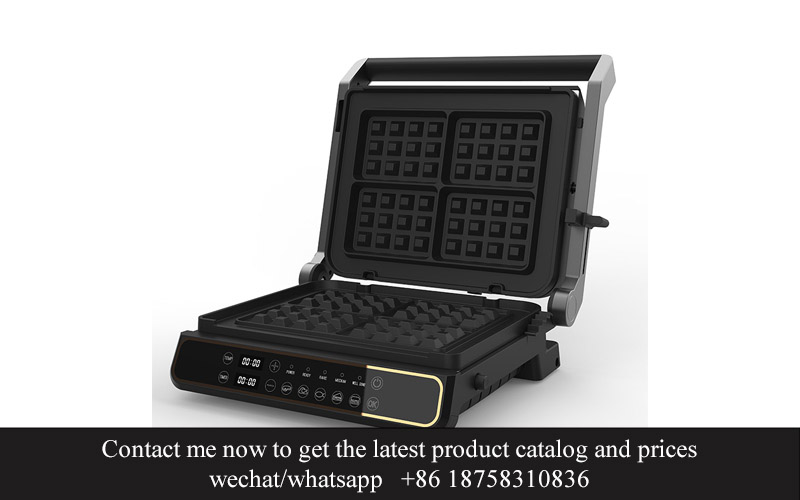
In the ever-evolving landscape of the juicer market, staying ahead of the curve is crucial. This section delves into the latest market trends and the pivotal role of data-driven insights in shaping the future of juicing technology.
The Shift Towards Health and WellnessConsumers are increasingly gravitating towards healthier lifestyles, and this is reflected in the demand for juicers. There’s a notable trend towards low-calorie, nutrient-rich drinks, prompting manufacturers to focus on juicers that efficiently extract vitamins and minerals from a wide variety of fruits and vegetables.
Smart Technology IntegrationJuicers are not just appliances anymore; they are becoming smart devices. The integration of technology like touchscreens, Bluetooth connectivity, and even AI-driven recommendations for health-conscious recipes is becoming more common. This shift is driven by the desire for convenience and personalized health management.
Eco-Friendly and Sustainable DesignsWith growing environmental concerns, there’s a trend towards eco-friendly juicers. This includes the use of sustainable materials, energy-efficient designs, and products that are recyclable or have a minimal carbon footprint. Brands that align with these values are gaining a competitive edge.
Mini and Compact JuicersSpace constraints in modern kitchens have led to the popularity of mini and compact juicers. These appliances are designed for small spaces, yet they don’t compromise on performance. They cater to individuals who value efficiency and portability, making them ideal for urban dwellers and frequent travelers.
Customization and PersonalizationThe market is seeing a rise in customization options, allowing consumers to choose from various colors, materials, and features. Personalization isn’t just about aesthetics; it extends to functionality, with users being able to select specific blades and filters for different types of produce.
Global Market ExpansionAs the health and wellness trend continues to grow, so does the global demand for juicers. Brands are looking to expand their reach into new markets, adapting their designs to meet the preferences and needs of diverse consumer bases around the world.
Data-Driven Product DevelopmentManufacturers are leveraging big data to inform product development. From customer feedback to sales analytics, data is used to identify trends, improve existing products, and create new features that resonate with the target audience. This approach ensures that products are not just innovative but also meet the evolving demands of consumers.
Health and Nutrition TrendsThe juicing market is closely tied to health and nutrition trends. As new research emerges, consumers’ preferences shift. For instance, the popularity of cold-pressed juicers has surged due to the belief that they preserve more nutrients than traditional centrifugal juicers. Data analytics help brands stay on top of these trends and adapt their offerings accordingly.
The Importance of Brand StorytellingData also plays a role in brand storytelling. By analyzing consumer behavior and preferences, companies can craft narratives that resonate with their audience. Whether it’s through social media campaigns, marketing materials, or product packaging, the use of data-driven insights to tell a compelling story is a powerful tool for brand differentiation.
ConclusionThe juicer market is dynamic, with a myriad of trends and data points influencing its direction. By staying informed and leveraging data-driven insights, manufacturers can create products that not only meet but exceed consumer expectations, ensuring their place in the ever-growing health and wellness industry.
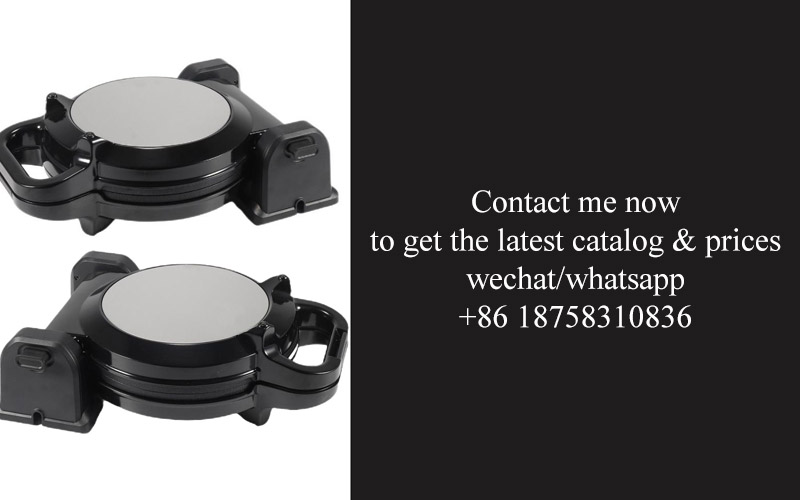
In the modern kitchen, juicers have transcended their traditional role as mere appliances to become sophisticated tools that blend functionality with technology. The integration of cutting-edge tech has not only enhanced their performance but also reshaped consumer expectations. Here’s a closer look at how technology has become the heartbeat of modern juicers.
The Rise of Smart FeaturesModern juicers are no longer just about extracting juice; they are equipped with smart features that cater to the tech-savvy consumer. From digital displays that provide real-time feedback to programs that automatically adjust settings based on the type of produce, technology has made juicing more intuitive and user-friendly.
Precision and EfficiencyTechnology has allowed juicers to achieve a level of precision and efficiency that was once unimaginable. High-speed motors, advanced blade designs, and precision gear systems ensure that fruits and vegetables are processed with minimal heat and oxidation, preserving more nutrients and vitamins. This technological advancement means that the juice produced is not only healthier but also tastes fresher.
Energy Efficiency and SustainabilityThe technological evolution in juicers has also brought about a focus on energy efficiency and sustainability. Newer models are designed to consume less power, reducing their carbon footprint and operating costs. Additionally, some juicers are made with eco-friendly materials, reflecting a broader industry commitment to environmental responsibility.
Customization and PersonalizationToday’s juicers often come with a range of settings that allow users to customize their juice extraction. Whether it’s a preference for smoothies, nut milks, or even baby food, technology enables juicers to adapt to individual needs. Users can choose from different speeds, pulsing options, and even specialized attachments for different types of produce.
Integration with Home AutomationModern juicers are increasingly being integrated into smart home systems. This means they can be controlled via smartphones or voice assistants, allowing for a seamless and hands-free juicing experience. Users can schedule their juicer to start extracting juice at a specific time, ensuring that they have a refreshing drink ready for their morning routine.
Health Monitoring and Nutritional TrackingSome juicers now come with built-in health monitoring and nutritional tracking capabilities. These features can analyze the nutritional content of the juice, providing users with detailed information about the vitamins, minerals, and antioxidants they are consuming. This level of personalization helps users make informed decisions about their diet and wellness.
Durability and MaintenanceTechnology has also played a role in making juicers more durable and easier to maintain. High-quality materials, such as stainless steel and BPA-free plastics, are used in construction, ensuring that juicers withstand daily use. Additionally, many modern juicers are designed with easy-to-clean parts and self-cleaning cycles, reducing the time and effort required for maintenance.
Safety InnovationsSafety has always been a priority in juicer design, and technology has introduced new safety innovations. Features like automatic shut-off when the juicer is overloaded or the container is removed, as well as non-slip bases and secure locking mechanisms, all contribute to a safer juicing experience.
The Future of Juicing TechnologyLooking ahead, the role of technology in modern juicers is poised to expand even further. Innovations such as AI-driven recommendations for health and wellness, enhanced connectivity for remote monitoring and control, and even biometric integration to tailor juicing to individual health needs are on the horizon. As technology continues to evolve, the modern juicer is set to become an even more integral part of the kitchen and health-conscious lifestyle.

In the realm of juicer manufacturing, quality assurance is the bedrock of a company’s reputation. It’s not just about meeting standards; it’s about exceeding expectations. Manufacturers must ensure that each juicer is not only functional but also durable, user-friendly, and safe.
The meticulous process begins with selecting high-quality materials. Stainless steel, for instance, is favored for its durability and resistance to corrosion, ensuring that juicers withstand the test of time. BPA-free plastics are also crucial for health-conscious consumers, who want to be assured that their drinking experience is free from harmful chemicals.
Testing is another critical aspect. Before a juicer hits the shelves, it undergoes a series of rigorous tests to ensure it performs as advertised. Leak tests, durability tests, and performance checks are all part of the process. These tests simulate real-world use to guarantee that the juicer can handle everyday tasks without failing.
Moreover, the design of the juicer plays a pivotal role in quality assurance. Ergonomic handles, intuitive controls, and a sleek design not only make the juicer more attractive but also contribute to its usability and reliability. A well-thought-out design means fewer user errors and a more satisfying juicing experience.
In the manufacturing process, precision is key. Each component must be precisely fitted to ensure seamless operation. Whether it’s the blades, the strainer, or the motor, the smallest discrepancy can lead to performance issues. Advanced manufacturing techniques, such as CNC machining and robotics, help maintain high precision throughout the assembly line.
Once the manufacturing process is complete, quality assurance doesn’t end. Continuous improvement is a mindset that must be ingrained in every stage of production. This means regularly reviewing and updating manufacturing processes to incorporate the latest technology and techniques.
Manufacturing expertise is not just about the technical know-how but also about understanding the market and customer needs. A manufacturer must be able to anticipate trends and adapt quickly. This might involve creating juicers with additional features, such as Bluetooth connectivity for tracking nutritional content, or those that are compatible with smart home systems.
Moreover, the manufacturing process is not confined to the factory floor. It extends to the supply chain, where a manufacturer must ensure that all parts are sourced from reliable suppliers. This includes regular audits of suppliers to ensure compliance with quality standards and ethical practices.
The role of manufacturing expertise in juicers also includes after-sales service. A well-trained customer service team is essential for handling inquiries and addressing any issues that arise post-purchase. This commitment to customer satisfaction reflects the overall quality of the product and the brand.
In conclusion, quality assurance and manufacturing expertise in juicers are multifaceted. It encompasses the use of high-quality materials, rigorous testing, precise design, and advanced manufacturing techniques. It’s about creating a product that not only performs as expected but also stands out in the market due to its reliability and innovation. For manufacturers, this dedication to quality is what sets them apart and ensures customer loyalty.
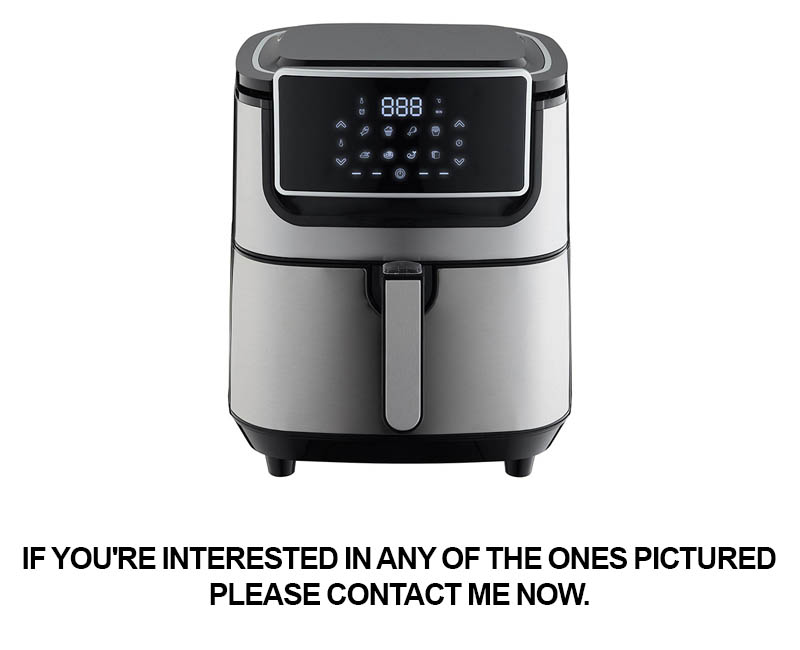
In the realm of juicer design, a few standout ODM projects have reshaped the industry with their innovative approaches. Let’s delve into some of these successful ventures and what they bring to the table.
The sleek, compact design of the EcoJuce juicer by GreenGrip was a game-changer. Their eco-friendly concept was not just about aesthetics; it was about creating a juicer that was as gentle on the environment as it was on fruits and vegetables. The project highlighted the importance of sustainability in appliance design.
Then there’s the high-tech, multifunctional juicer by TechJuice Inc. This model was not just about squeezing out fresh juice; it offered an integrated system that allowed for smoothie creation, nutrient extraction, and even ice cream making. The design process was meticulous, ensuring that every feature added value to the end-user experience.
One notable project was the RetroRevive juicer, which captured the essence of nostalgia without compromising on functionality. The design team at VintageTech reimagined the classic juicer with modern components, blending old-school charm with contemporary efficiency. The project showcased how design can evoke emotions and connect with consumers on a personal level.
The ProSeries by PowerPulse was another success story. Their focus on durability and efficiency resulted in a professional-grade juicer designed for both home use and commercial kitchens. The design team went through countless iterations, ensuring that the juicer could handle the toughest fruits and vegetables without losing its cutting edge.
The ZeroWaste juicer by CleanFlow Design Studio was a testament to how a design can make a difference. By creating a juicer that maximized juice yield and minimized waste, the project emphasized the importance of environmental responsibility. The sleek, minimalist design was both visually appealing and practical, making it a favorite among eco-conscious consumers.
In the world of juicers, design isn’t just about creating a pretty face. It’s about innovation, functionality, and user experience. The case study of the SmartTouch juicer by IntuiTech illustrates this perfectly. Their design approach focused on simplicity, allowing users to operate the juicer with a touch of a button. The intuitive design minimized the learning curve, making it accessible to everyone from the tech-savvy to the not-so-tech-savvy.
The project by BlendEase Design was centered around accessibility. They developed a juicer that was not only visually appealing but also designed for those with mobility challenges. The easy-to-use interface and ergonomic grip were designed to cater to a broader audience, ensuring that no one was left out of the fresh juice revolution.
The HydrateHub juicer by HydrationTech was a collaborative effort that resulted in a versatile and powerful appliance. The design team integrated advanced features like an auto-pulse function to prevent clogging and a built-in cleaning system, which simplified the post-use process. The project was a clear demonstration of how technology can enhance the juicing experience.
In each of these case studies, the common thread was the dedication to the customer. The design teams behind these successful ODM projects took the time to understand the needs and desires of their target market, and they delivered products that not only met but exceeded expectations.
From the EcoJuce’s commitment to sustainability to the ProSeries’ focus on durability, these projects show that when it comes to juicers, design can drive innovation, improve quality of life, and even make a positive impact on the world. Each project tells a story of how a thoughtful design process can lead to a successful product that resonates with consumers.
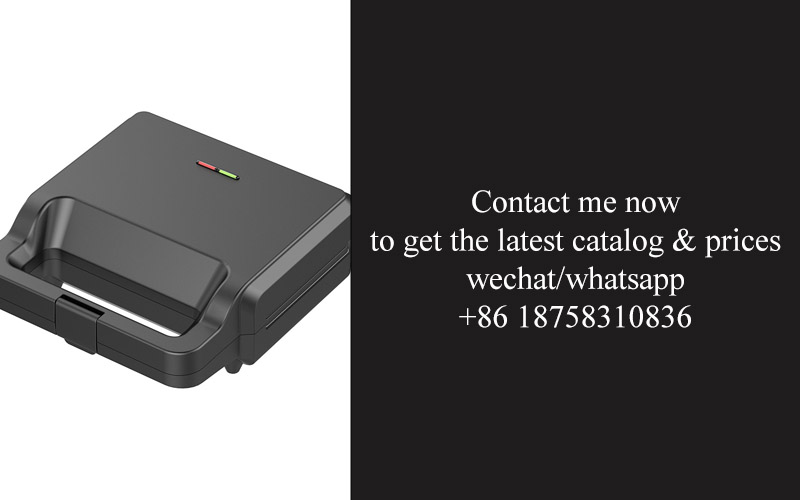
The ODM juicer design service is not just a response to market demands; it’s a proactive approach to shaping the future of kitchen appliances. As we look ahead, several factors are poised to redefine the landscape of juicer design and manufacturing.
Innovation at the CoreInnovation is the lifeblood of any ODM juicer design service. As consumer preferences shift towards health and convenience, designers are pushing the boundaries of what a juicer can be. The future will see juicers that are not just functional but also a blend of aesthetics and technology.
Smart IntegrationThe integration of smart technology is a trend that’s only going to accelerate. Expect juicers that can connect to smartphones, providing real-time analytics on juice consumption, nutritional content, and even maintenance schedules. This level of connectivity will transform the juicer from a simple kitchen tool to a health companion.
Customization on DemandPersonalization is becoming a key driver in the appliance market. ODM services will increasingly offer customizable juicers, allowing customers to choose from various designs, materials, and features. This shift reflects a market that values individuality and uniqueness.
Sustainability and Eco-Friendly DesignsWith growing environmental concerns, sustainability is becoming a crucial factor in product design. ODM juicer design services will focus on creating appliances that are not only efficient but also eco-friendly. This could mean using recycled materials, designing for longevity, and ensuring that the manufacturing process is environmentally responsible.
Global Trends Influencing DesignThe global marketplace is a melting pot of ideas and trends. ODM juicer design services will need to stay abreast of these trends to create products that resonate with a diverse customer base. From the sleek, minimalist designs favored in Europe to the vibrant, colorful appliances popular in Asia, the future lies in adapting to these global influences.
Regulatory Compliance and SafetyAs regulations become more stringent, especially in health and safety, the role of ODM juicer design services will be to ensure compliance without compromising on design and functionality. This includes not only the materials used but also the design of the appliance itself to prevent accidents and ensure user safety.
The Importance of PartnershipsThe success of ODM juicer design services will rely heavily on strong partnerships with manufacturers. These collaborations will allow for seamless transitions from design to production, ensuring that the final product meets the highest standards of quality and innovation.
Emerging Technologies to WatchFrom 3D printing for prototypes to advanced robotics in assembly lines, emerging technologies will play a significant role in the future of juicer design. These technologies will not only speed up the design process but also enable the creation of more complex and innovative appliances.
Consumer Behavior AnalysisUnderstanding consumer behavior is key to designing products that sell. ODM services will use data analytics to predict future trends and design juicers that cater to these preferences. This could involve anything from the color of the juicer to the ease of cleaning or the nutritional information displayed on the appliance.
The Role of BrandingBranding will continue to be a crucial aspect of juicer design. ODM services will help manufacturers create a strong brand identity through design elements that reflect the brand’s values and target market. A well-branded juicer can become a powerful tool in marketing and sales.
As the ODM juicer design service evolves, it will be a dynamic field that requires a keen eye for detail, a willingness to embrace change, and a commitment to delivering products that not only meet but exceed customer expectations.
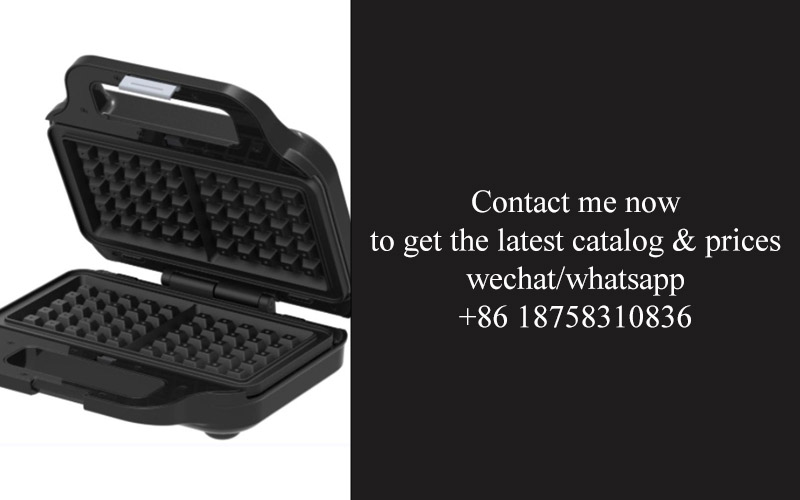
In the ever-evolving world of juicing technology, innovation is the driving force behind the success of any juicer design service. As the market becomes increasingly competitive, embracing innovation means staying ahead of the curve and delivering products that resonate with consumers’ needs and desires. Here are some key insights into how innovation shapes the juicing landscape.
Innovation isn’t just about creating something new; it’s about solving problems and enhancing the user experience. From ergonomic designs to advanced filtration systems, innovative features can make juicers not just a tool for extracting nutrients but a statement piece in any kitchen.
One of the most notable aspects of innovation in juicer design is the emphasis on health and wellness. As people become more aware of the benefits of fresh, unprocessed foods, juicers are being equipped with features that ensure the highest quality juice extraction. This includes materials that are free from harmful chemicals and technology that preserves the nutritional value of fruits and vegetables.
Smart technology has also played a significant role in modern juicer design. Features like touch screens, digital timers, and automated cleaning cycles not only add a touch of convenience but also appeal to tech-savvy consumers. These innovations make juicers more user-friendly and accessible to a broader audience.
Another critical area of innovation is in the design itself. Modern juicers are no longer just functional appliances; they are sleek, stylish additions to kitchen decor. The design process often involves collaborating with industrial designers to create aesthetically pleasing forms that can withstand the rigors of daily use.
Customization is another key trend in juicer design. Recognizing that no two kitchens or users are the same, many companies offer ODM (Original Design Manufacturing) services. This allows clients to bring their unique vision to life, ensuring that their juicers not only perform well but also stand out in a crowded market.
One of the most compelling aspects of innovation in juicer design is the integration of sustainable practices. From eco-friendly materials to energy-efficient motors, manufacturers are increasingly focusing on the environmental impact of their products. This not only aligns with consumer values but also sets brands apart in a market that values sustainability.
In terms of data-driven insights, the juicer industry has seen a shift towards using analytics to understand consumer behavior and preferences. This information is crucial for informing design decisions, ensuring that products are not only attractive but also meet the specific needs of their target audience.
Case studies of successful ODM juicer design projects demonstrate the power of innovation. These projects often involve a deep understanding of market trends, consumer feedback, and technological advancements. By combining these elements, designers can create products that not only meet but exceed expectations.
Looking ahead, the future of ODM juicer design service is likely to be shaped by ongoing technological advancements and changing consumer preferences. We can expect to see further integration of smart technology, with juicers becoming more intuitive and interactive. Additionally, the focus on sustainability and health will continue to drive the development of new features and materials.
In conclusion, embracing innovation in juicer design is about more than just creating a new product—it’s about redefining the category. By focusing on health, technology, design, and sustainability, juicer design services are not just producing appliances; they are crafting experiences that resonate with the modern consumer’s lifestyle. As the industry continues to evolve, those who lead the charge in innovation will undoubtedly capture the hearts and minds of juice enthusiasts around the world.